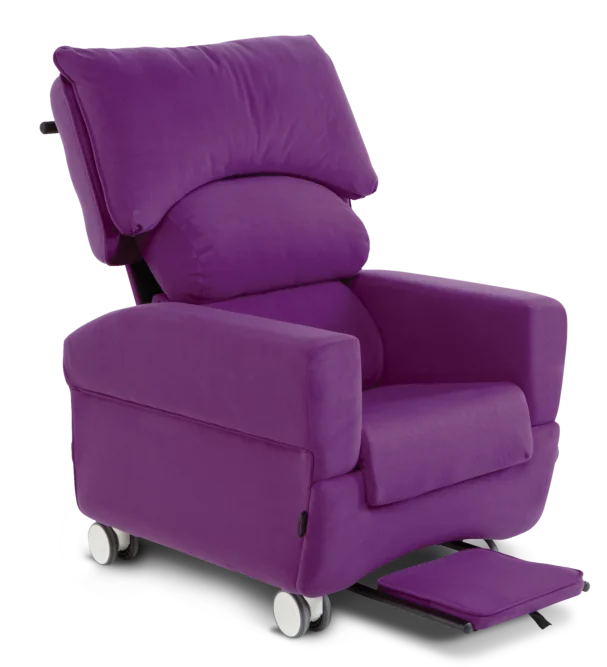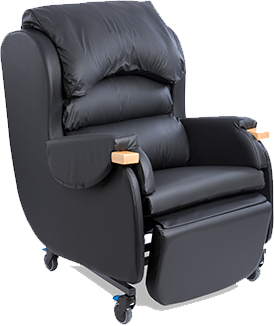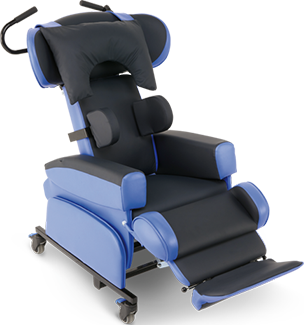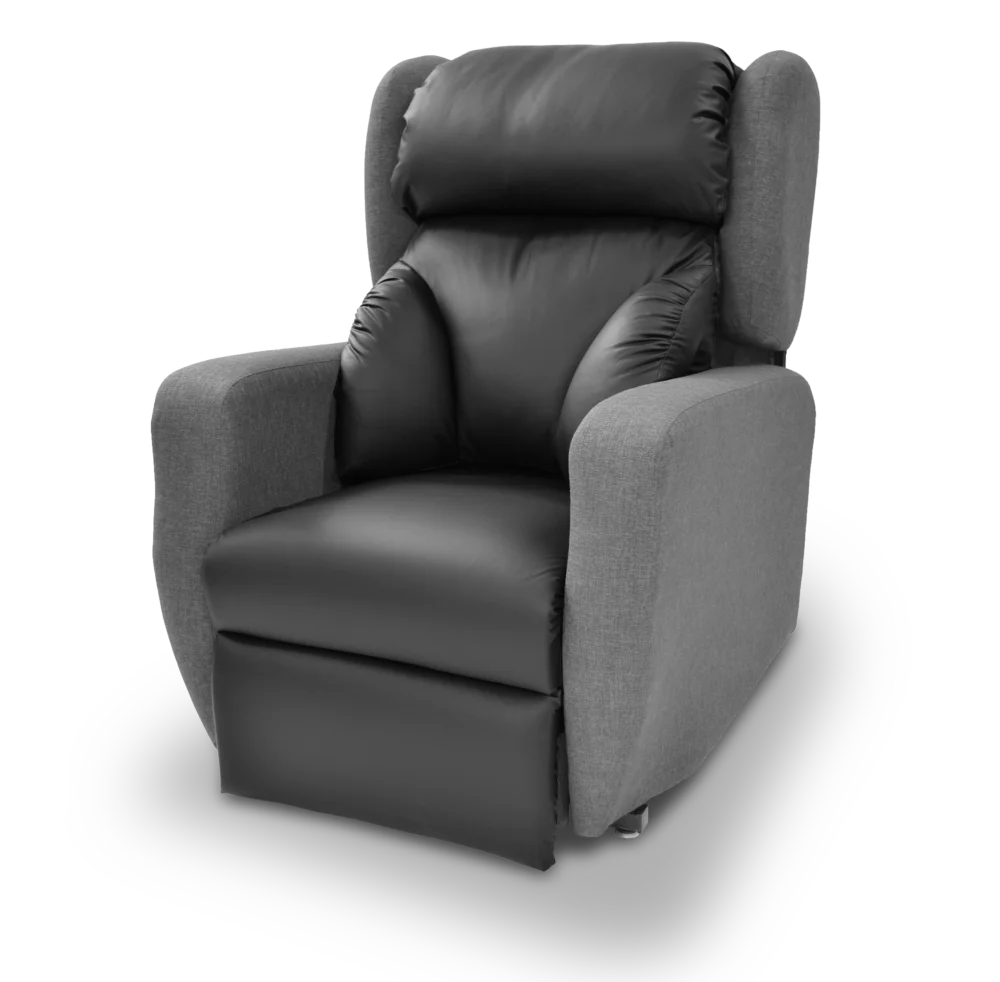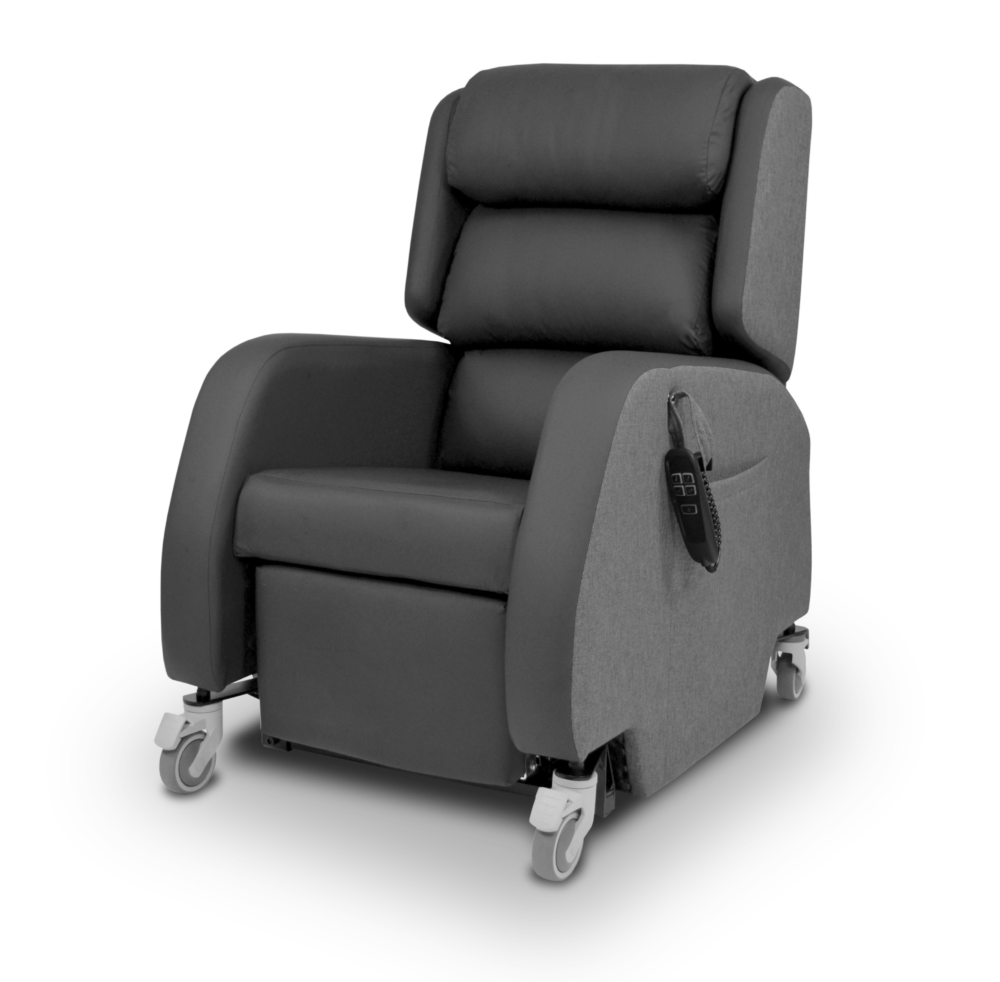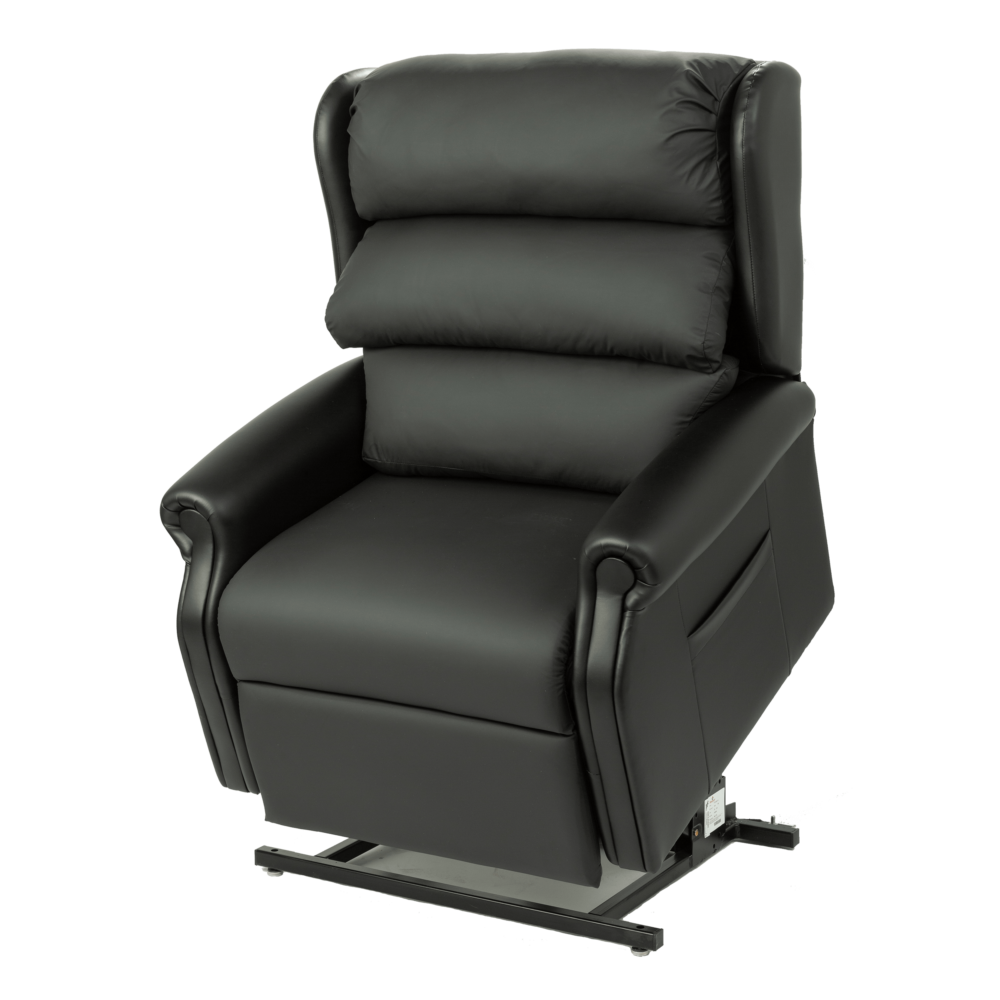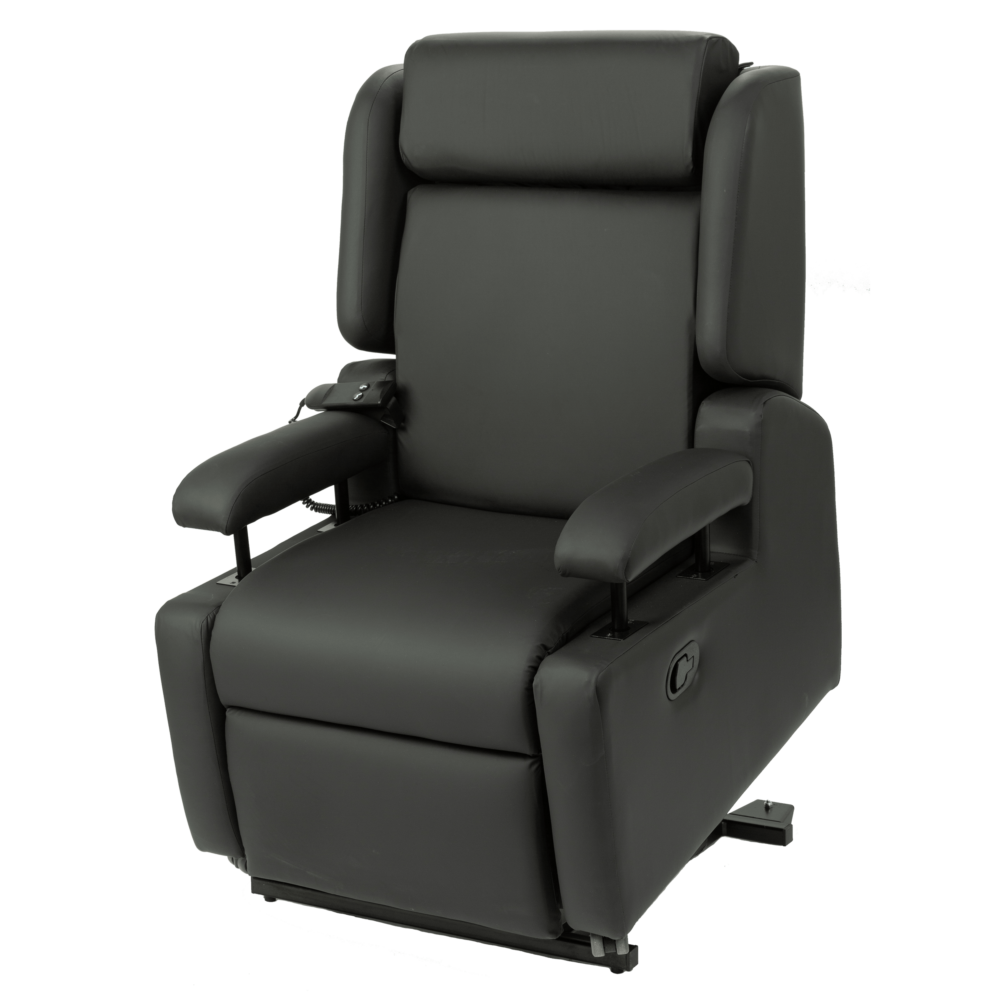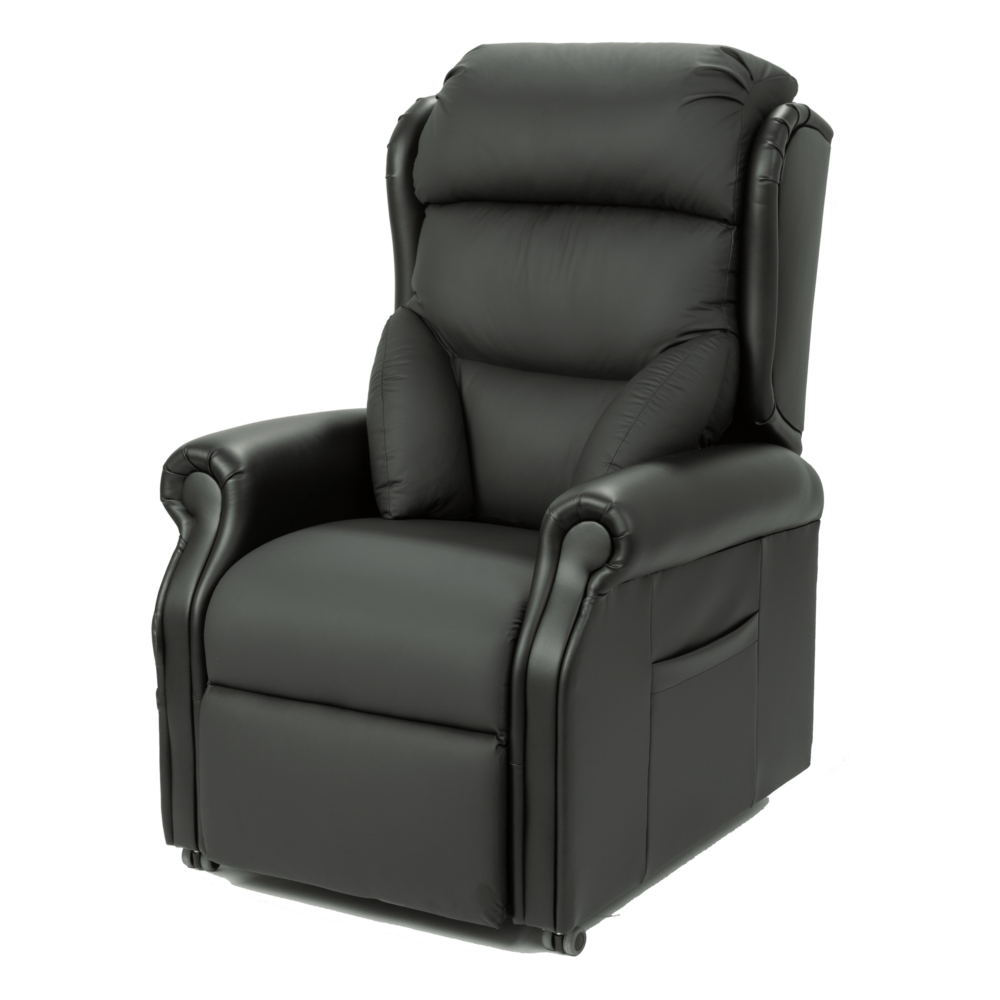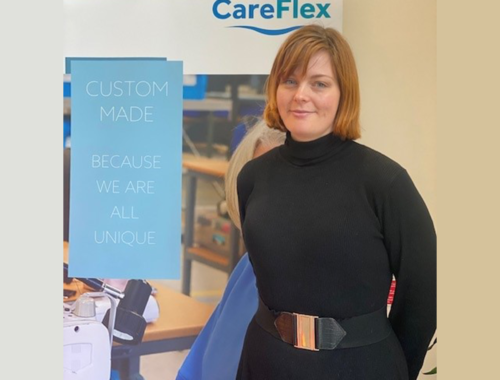Role of Occupational Therapists in Postural Care and Specialist Seating
Postural care requires a multi-disciplinary approach and often involves several different professional roles. This may include an occupational therapist, physiotherapist, rehabilitation engineer, tissue viability nurse or even a speech and language therapist if specifically looking at the head position in relation to swallow function. Each discipline considers the assessment from a slightly different perspective and often it can be helpful to have a multi-faceted approach.
Occupational Therapy
The focus of the occupational therapy profession as a whole is to support and enable people to do the things they want to do in life with a focus on participation. Occupational therapists take a holistic view when assessing and supporting individuals to achieve their full potential, considering both mental and physical health as well as environmental and personal factors.
However, standard pre-registration training for occupational therapists includes very little, if any, posture management training. This can lead to a lack of confidence within the profession and uncertainty around whether occupational therapists have the skills required for postural care.
Postural Seating
It is recognised that provision of appropriate postural seating can increase participation in activities through improving the accessibility and awareness of the environment, as well as enabling individuals to be more functional in a better supported position. The involvement of occupational therapists in the provision of seating offers a distinctive approach in how positioning affects a person’s ability to participate.
If an individual’s posture is not well supported, they may be unable to engage in activities effectively. Energy and focus may be lost in the struggle to maintain postural stability. Hand function may be inhibited as the individual grips the edge of their seat or armrests to support their balance. Poor head position can prevent engagement as they may only be able to look down and are not able to see other people sitting around them. Additionally, the individual may be in too much pain to concentrate on activities. This can have a negative effect on their mental health as they are less able to take part in daily life.
Posture Management
Successful management of posture can prevent secondary complications such as tissue damage, muscle contractures, pain and discomfort, constipation and respiratory or urinary infections and enable people to have better function and increased participation.
Particularly for children at school, it has been reported that those with good trunk stability have improved fine motor skills and are able to communicate and interact with others more effectively. Likewise, not having appropriate postural support, can have a negative effect on their schooling.
Another important consideration is that unsupported posture can lead to others wrongly assuming the individual is less able to participate and therefore not engaging with them. Whereas, appropriate posturally supportive seating can present opportunities to the individual for interaction with people and the world around them.
Occupational therapists bring unique expertise to postural care by viewing function and participation holistically. Utilising skills of activity analysis, along with biomechanics and a person-centred approach to find the right solutions can improve health and wellbeing outcomes so that people are able to engage in occupation to live a more meaningful and comfortable life.
Postural stability is essential for effective functional performance and is therefore a pre-requisite for occupational participation. Put simply, posture is the foundation of function.
Postural Management Training
Any occupational therapists wishing to further their knowledge of postural care can benefit from further training, as detailed below. As a starting point, the top three things to consider are:
- What is the individual’s sitting tolerance? For example, can they only manage to sit for short periods due to pain, do they wish to sit for longer periods to engage in activities or have they not sat upright for a long time? This could indicate that a specific type of seating is required, e.g. high-pressure relief, Tilt-in-Space.
- What postural support is required? For example, does the person lean to one side, are they slouched down in the seat, is their head flexed forwards? This will guide your seating selection, e.g. does the seat need lateral support, a seat wedge, a pelvic belt.
- How will they transfer? Can the person stand to transfer, do they need assistance or a hoist? This may affect the type of seating you select or some of the features required, e.g. removable armrests.
To further expand your knowledge and skills, the CareFlex Encyclopedia of Specialist Seating provides a comprehensive guide for professionals who assess for specialist seating. It will give professionals the knowledge needed to advocate for those who need it, and our Clinical Specialist, Rebecca Dunstall, writes it.
We also offer free training and catch-up webinars to accompany the Encyclopedia; please check out the forthcoming webinar dates here and sign up.
CareFlex training events are free to attend and qualify as part of a Clinician’s CPD, with them receiving a certificate of attendance and a learning pack. Training events are always a combination of theory and practical hands-on sessions. They are packed with useful hints and tips emphasising the importance of specialist seating in improving individuals’ quality of life.
Written by our guest blogger, Lauren Osborne, an Independent Posture & Wheelchair Specialist Occupational Therapist.
References
- Royal College of Occupational Therapists (2019) What is Occupational Therapy? Available at: https://www.rcot.co.uk/about-occupational-therapy/what-is-occupational-therapy
- Daly G (2017) Prevention and postural management of residents in care homes. RCOT annual conference, pp. 109.
- Day E, Lockwood D (2012) The impact of posture management on two adults with learning disabilities. RCOT Annual Conference, pp. 49.
- Osborne LJ, Gowran RJ, Casey J. Evidence for 24-hour posture management: A scoping review. British Journal of Occupational Therapy. 2023;86(3):176-187. doi:1177/03080226221148414
- Changing our Lives (2018) Postural care strategy. Changing Our Lives.
- Pope PM (2007) Severe and Complex Neurological Disability: Management of the Physical Condition. Edinburgh: Butterworth-Heinemann/Elsevier.
- Agustsson A, Jonsdottir G (2018) Chapter 7: Posture management 24/7. In Lange ML, Minkel JL (eds) Seating and Wheeled Mobility: A Clinical Resource Guide. SLACK Incorporated, pp.121–136.
- Hutton E, Coxon K (2011) ‘Posture for Learning’: Meeting the postural care needs of children with physical disabilities in mainstream primary schools in England – A research into practice exploratory study. Disability and Rehabilitation33: 19–20, 1912–1914.
- Gavin-Dreschnack, D. (2004) ‘Effects of wheelchair posture on patient safety’, Rehabilitation nursing: the official journal of the Association of Rehabilitation Nurses, 29(6), pp. 221-6.
- Reid, D., Brault, R. and Croteau, D. (2009) ‘Design and development of the two-plane seating concept to enable quality of sitting posture and enhanced occupational performance’, Technology and Disability, 21(4), pp. 149-158.
- Agustsson A, Jonsdottir G (2018) Chapter 7: Posture management 24/7. In Lange ML, Minkel JL (eds) Seating and Wheeled Mobility: A Clinical Resource Guide. SLACK Incorporated, pp.121–136.

